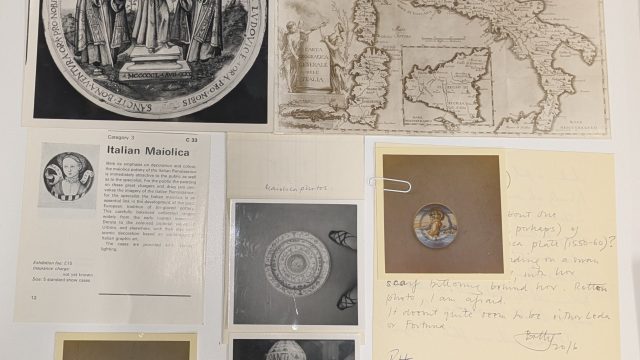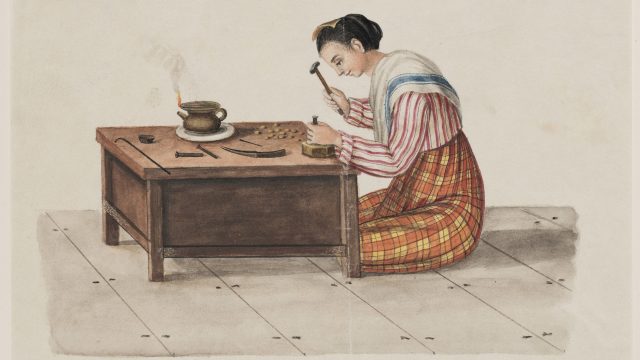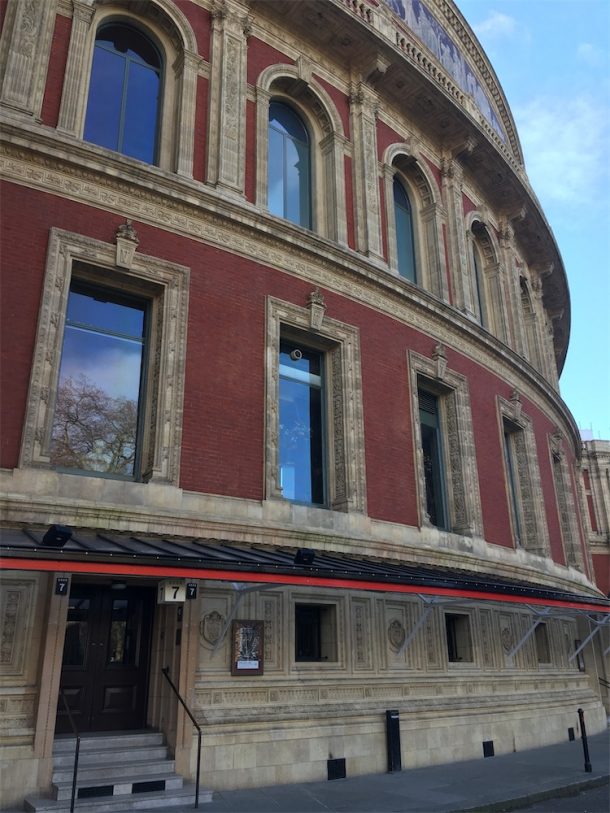
While walking around the outside of the Royal Albert Hall, it can be tricky to take in all the striking details on the building. One aspect of the terracotta decoration is a series of shields set at eye level around the ground floor. The V&A Collections house 25 objects – corresponding to many of the shields on the facade.
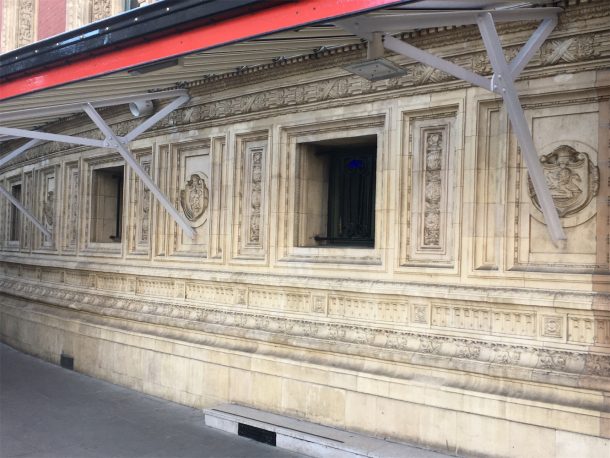
A cursory glance at the shields will do little justice to each distinct design, their deliberate symbolism and their specific historical context. Together and individually, the shields are an expression of the ideas and values of nineteenth-century elite society. They relate and reproduce the discursive cultural landscape of the period.
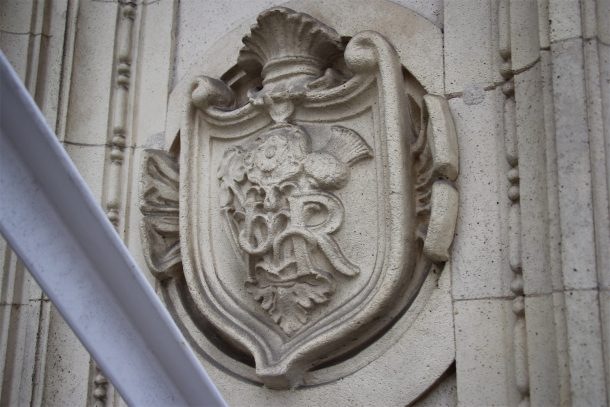
The hall’s decorative shields
There are 63 shields around the hall. All have an identical border but display 27 different charges; most are repeated, whereas others appear only once. The shields include heraldic symbols, royal monograms, national emblems and crests of individuals connected to the hall. The devices and their meaning would have been well known to contemporary onlookers. Knowledge that readers of this blog post will soon share!
The shields refer to key aspects of the Royal Albert Hall’s origins. They represent the influential figures and the grand ambitions that drove the hall’s inception and construction. When understood in their historical context, the shields are illustrated allusions to the social, cultural and political landscape of the time they were made. In some eyes they are terracotta sculptures, technological triumphs, and architectural ornamentation. But in other ways they can be seen as a kind of coded language.
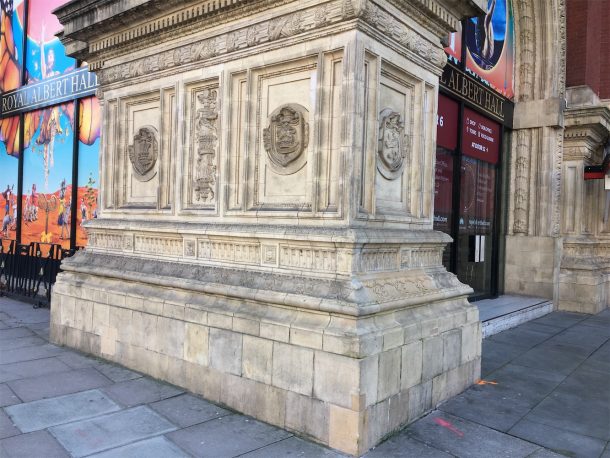
Symbols of progress and prosperity
The Royal Albert Hall emerged out of the success of the 1851 Great Exhibition, a world fair celebrating industry and culture that took place at the Crystal Palace, Hyde Park. In the age of industrialisation and imperial expansion, it showcased national progress and modern technological development. The economic prosperity and ingenuity of the time is represented across the shields.
One shield features a laurel branch and two filled cornucopias. Laurel, the name given to a bay-tree, symbolises triumph or fame in heraldic tradition. The cornucopia is the horn of plenty, and originates from ancient Roman culture.
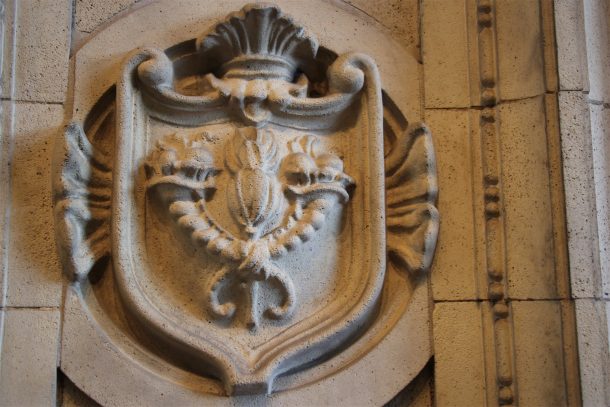
Another shield depicts a blazing half-sun above a Grecian-shaped jug, perhaps implying the good fortune surrounding material production.
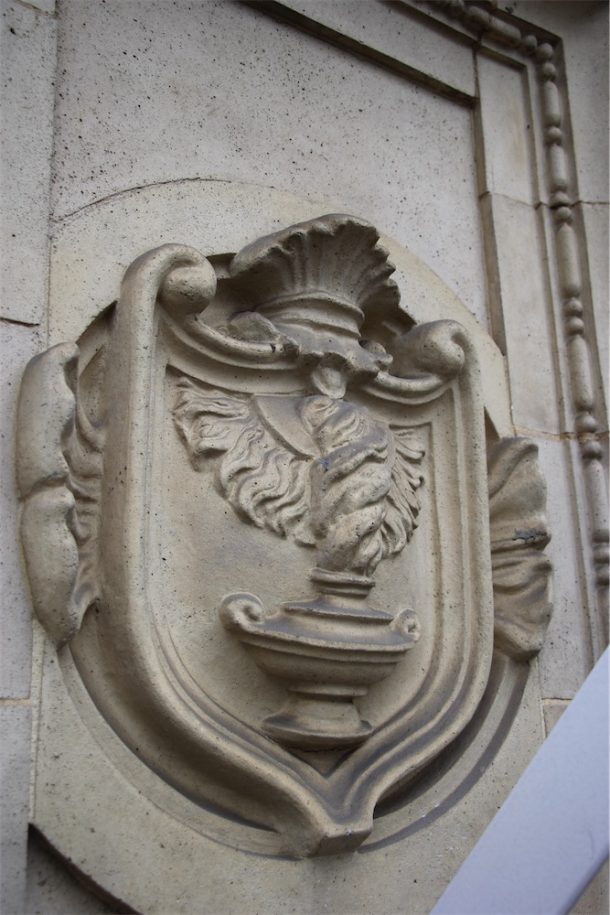
Classical culture at the service of modern meanings
When initially imagined, the Royal Albert Hall was meant to be a great central hall for the promotion of art and science, to bring together savants of the era. Consequently, on the façade a shield featuring a lyre celebrates the arts. In heraldic tradition the lyre symbolises lyric poetry, rather than music.
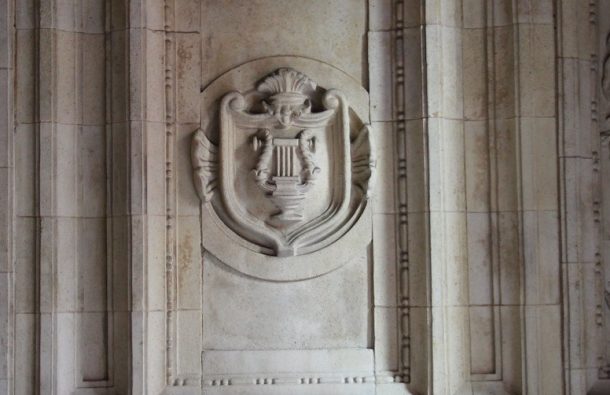
Even though the iconography of the shields was undoubtedly influenced by contemporary events, there are also classical and antiquarian references. This is clear from certain devices like the caduceus, which is the staff of Hermes, the ancient Greek god of trade, wealth, luck and travel. The shields’ symbolism not only celebrates what was modern, but also recalls a glorified past, which effectively aligns the creation of the hall with the prestige of earlier eras and cultural traditions.
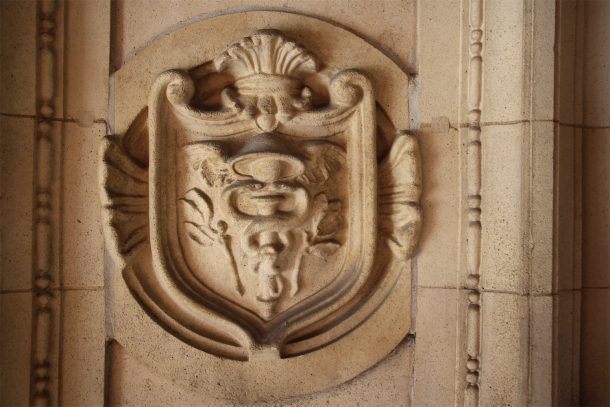
One shield displays Pegasus, a winged horse in Greek mythology that symbolises freedom, liberty and strength.
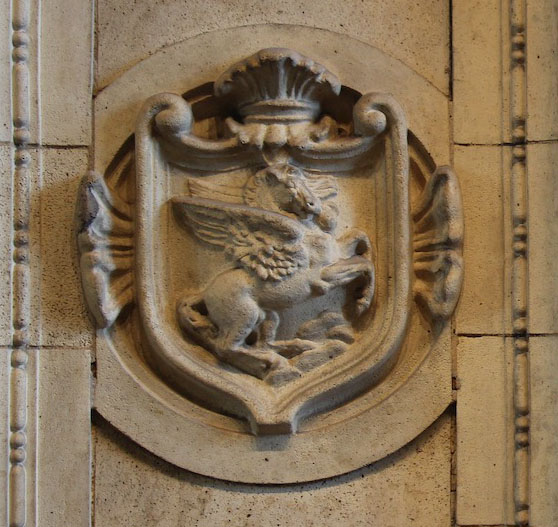
Another shield bears a trident framed by two dolphins. The trident is the sceptre of Poseidon or Neptune, respectively the Greek and Roman gods of the sea. The shield may denote the strength of the Great Britain’s maritime power.
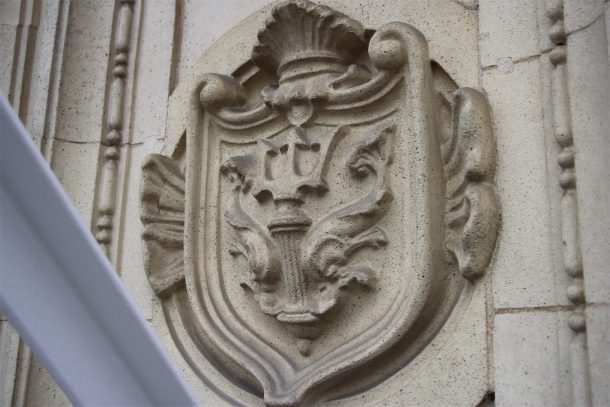
Establishing a national scope
As the frieze around the building testifies, the ‘Hall was erected for the advancement of the Arts & Sciences and works of industry of all nations in fulfilment of the intention of Albert Prince Consort’. The nations of England, Scotland and Ireland are represented by their emblems. Wales, however, is notably absent (although this is not surprising for the 19th century, when Wales was not an independent state). Some of the loyal subjects of her majesty Queen Victoria are recognised on the building.
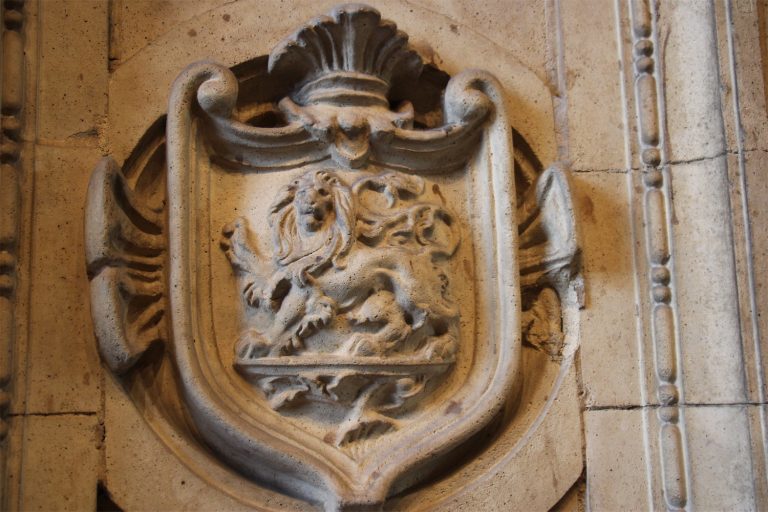
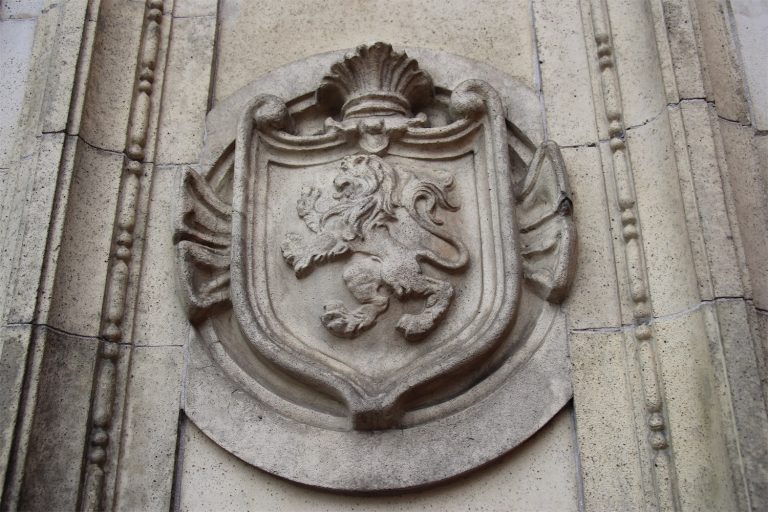
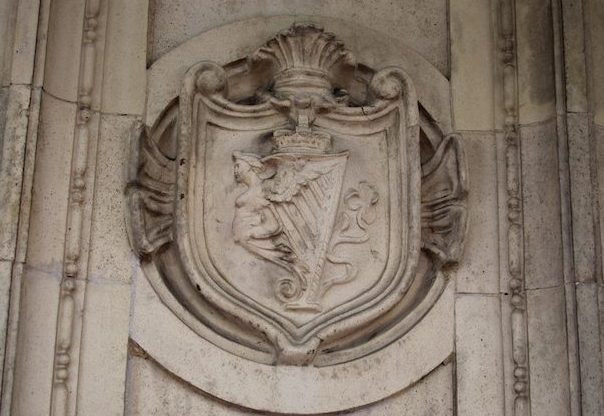
Commemorating the Victorian elite
One shield, celebrating Queen Victoria (1819 – 1901), occurs 8 times on the facade, more than any other. The repetition is at least in part a sign of reverence towards the monarchy, but it is also an expression of the specific role played by the Queen as an early patron of the hall. Victoria personally decided that the hall would be named after her husband, and laid the foundation stone at a grand ceremony on 20 May 1867.
The shields around the hall’s circumference commemorate other individuals, too. The twelve men in the Provisional Committee for the hall each have their personal crests featured. The Provisional Committee was the governing body for the construction of the Royal Albert Hall established by Royal Charter on 25 March 1867. The members all were commissioners for the 1851 Great Exhibition.
To learn more about the history of the building of the Royal Albert Hall from its conception to construction, visit the project webpage.

